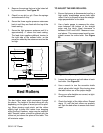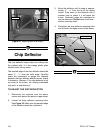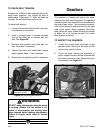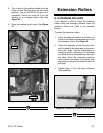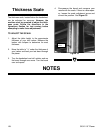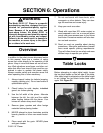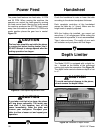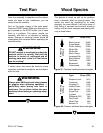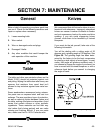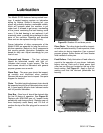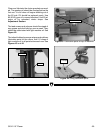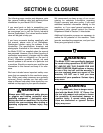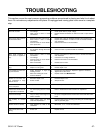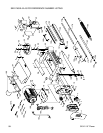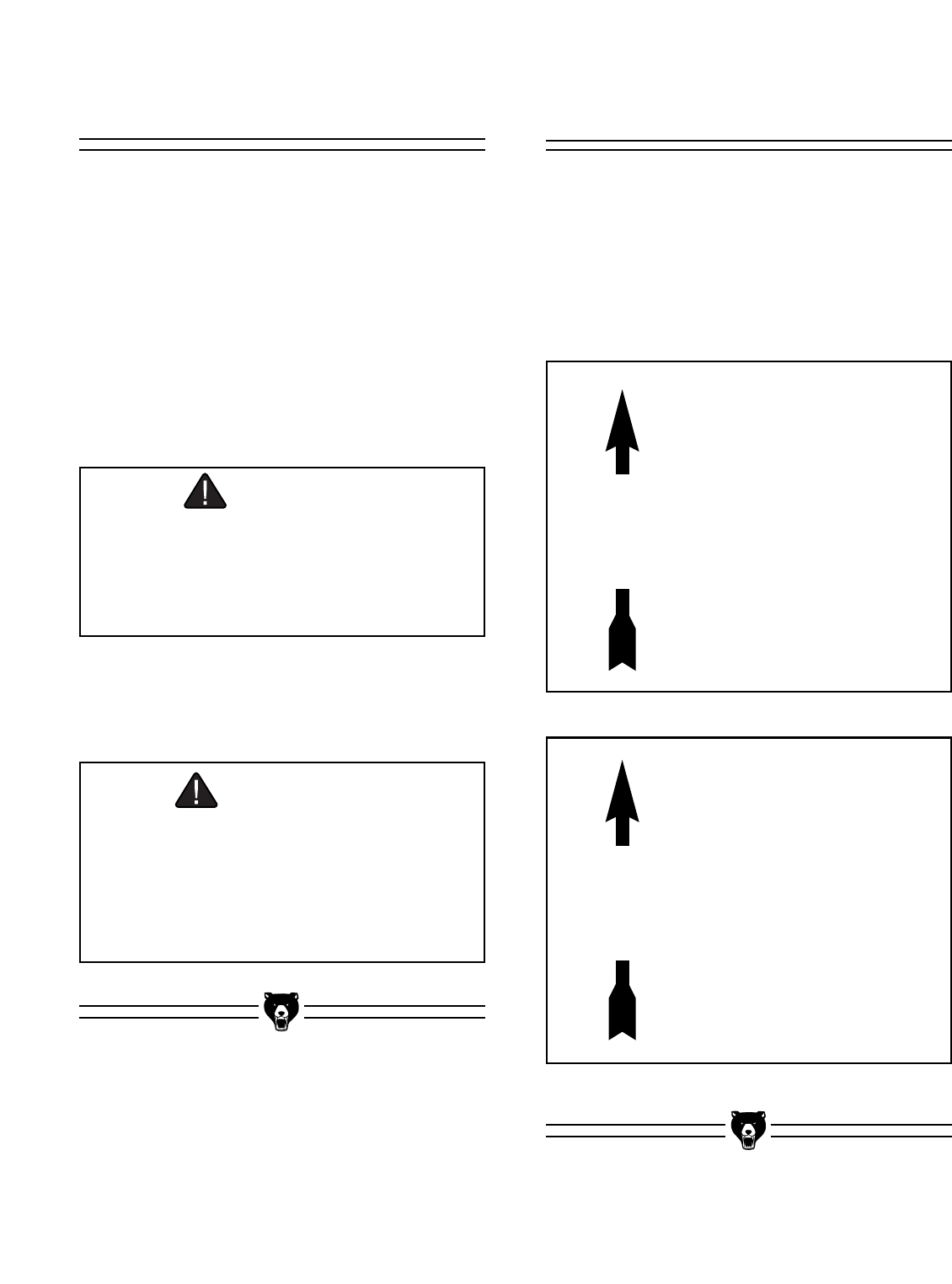
G1021 15" Planer -31-
Once the assembly is complete and the adjust-
ments are done to your satisfaction, you are
ready to test the machine.
Turn on the power supply at the main panel.
Press the START button. Make sure that your fin-
ger is poised on the STOP button, just in case
there is a problem. The planer should run
smoothly, with little or no vibration or rubbing
noises. Strange or unnatural noises should be
investigated and corrected before operating the
machine further.
Test Run
WARNING
DO NOT attempt to investigate or adjust the
machine while it is running. Wait until the
machine is turned off, unplugged and all
working parts have come to a rest before
you do anything!
WARNING
Always wear ANSI-approved safety glasses
or goggles when operating equipment —
particularly when testing new tools or
machinery. Do not allow visitors into your
workshop when testing or operating equip-
ment.
If noises occur that cannot be found by visual
inspection, feel free to contact our service depart-
ment for help.
The species of wood, as well as its condition,
have a dramatic effect on planing ability. The
harder the wood (as illustrated by its shear
strength), the more difficult it will be to plane. A
brief listing of common hard and soft woods in
relation to their shear strengths and planing diffi-
culty is listed below.
Type Shear (PSI)
Black Locust 2,480
Sugar Maple 2,330
Pecan Hickory 2,080
White Oak 2,000
White Ash 1,950
Black Cherry 1,700
American Elm 1,510
Black Walnut 1,370
Red Alder 1,080
Basswood 980
Cottonwood 930
Increasing
Difficulty
Figure 37. Common hardwood shear strengths.
Type Shear (PSI)
Western Larch 1,410
Tamarack 1,280
Douglas Fir 1,160
Alaska Cedar 1,130
Sitka Spruce 1,150
Sugar Pine 1,050
Cypress 1,000
Redwood (OG) 940
Red Cedar 860
White Pine 850
Balsam Fir 710
Increasing
Difficulty
Figure 38. Common softwood shear strengths.
Wood Species



